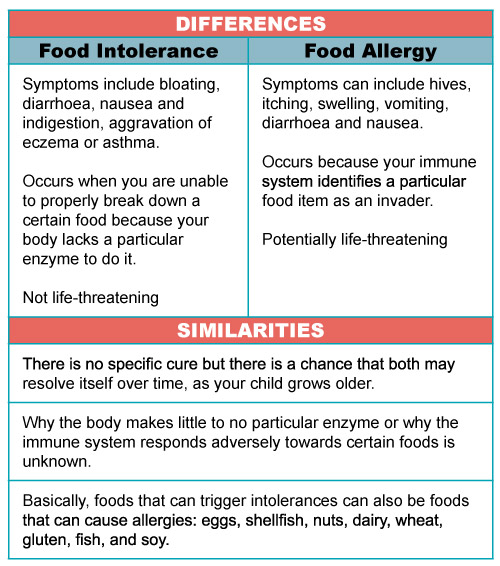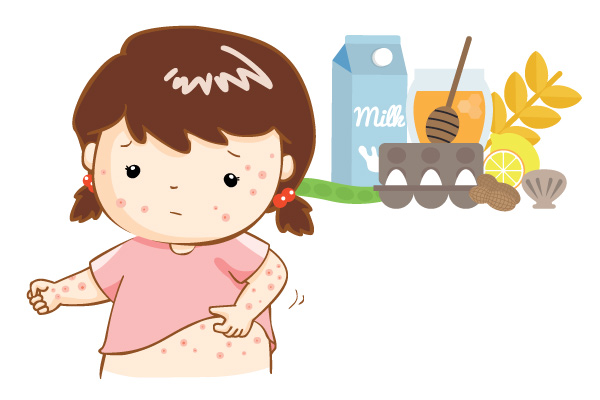Both food allergy and intolerance are easily confused with one another because of certain similarities in symptoms. But what are their differences? How can I identify whether my child has an allergy or intolerance? These and other questions explained:
Q1: Since some of the symptoms of food intolerance and allergy are similar, how can I know for sure which one my child is affected with?
With both food intolerance & allergy, symptoms may present itself seconds, minutes or hours after ingesting a food. Intolerance symptoms can even occur days after. To be absolutely sure, your child should be diagnosed properly by a doctor or medical expert (e.g. paediatric allergist).
Q2: My child was changing to formula milk but she got diarrhoea and severe skin rashes all over after drinking the first time, what’s in it that’s actually causing the problem?
There could be two reasons why this happened; (1) Your child is intolerant to the sugar lactose in cow milk formula, or (2) she is allergic to protein in cow milk formula that can cause an allergic reaction. Cow’s milk protein is the most common food allergy in infants and young children, and can be found in many types of food products. It is not fully understood why the immune system would consider these proteins harmful and most people who react to cow’s milk will also react to sheep, goat and buffalo milk. As an alternative, you can give your child extensively hydrolysed formula or amino acid formula instead.
Q3: How can I get my child to grow out of food intolerance or allergy?
Though possible, there is no guarantee. Researchers have found that some children are prone to outgrow certain allergies more quickly than others, if they’re exposed to the allergen (the food causing the problem). Experts have used this concept to conduct an experimental treatment, known as oral or sublingual allergen immunotherapy. It involved exposing the child to the food he is allergic to in incremental amounts over a period of time (usually 3-5 years). This helps re-educate the immune system to tolerate the allergenic food. This treatment must be performed by an experienced allergist.
Q4: What if I don’t give my child known allergens at all and save the trouble? Would that work?
True, you will be able to evade symptoms of intolerance and allergy. However, allergens consist of foods that contain important nutrients that other foods may not have but is needed by your child to grow optimally. Hence, it is important to at least look for substitutes that would help fill in the nutritional void. Do not cut off food groups out of your child’s diet without medical advice, and consult a dietitian to talk about food substitutes and alternatives.
Q5: My child is approaching 6 months old but I’m afraid to start complementary feeding. What if he’s allergic to the foods I give him?
As your baby grows older, bigger and more active, you need to begin complementing his or her diet with additional foods to support growth and satisfy hunger. Furthermore, evidence has shown that there is no reason to delay introduction of highly allergenic foods (e.g. cow’s milk, eggs, peanuts, tree nuts, soy, wheat, fish, and shellfish) beyond 4 to 6 months of age.
You should introduce highly allergenic foods to your baby with the first taste being at home. If no reaction occurs, you can gradually increase the amount at a rate of one new food every 3 to 5 days.
An educational contribution by Malaysian Paediatric Association.








Comments